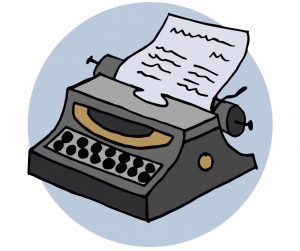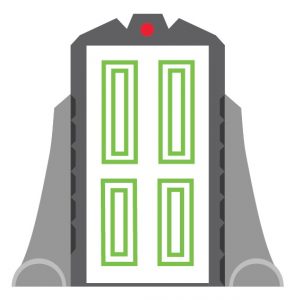As a child, I was desperate to part with my mental illnesses.
At age 10, I often wished for my anxiety to vanish—to extract its roots from the depths of my being and make it a stranger. At age 15, I wished the same of my depression, wanting nothing more than to escape from the distortion that seemed to absorb every aspect of my life. I dreamed of a life without mental illness, where I could go about my day without calculating which situations could trigger a panic attack or which classes would receive my limited energy. Depression and anxiety were an incredibly taxing part of my life, and I often feared I wasn’t strong enough to handle them long-term.
More than anything, I feared reaching a certain “point of no return” where I would be totally consumed by my mental illnesses, unable to recognize myself. For many years, I considered that deadline to be my 20th birthday.
Since I began experiencing anxiety when I was 10, 20 would mark the point in which I would be mentally ill for half of my life. To my younger self, it seemed to represent my descent into a different life, a life where I wouldn’t even remember what it felt like to live without mental illness.
As a young teenager, I was certain that my depression and anxiety were temporary—mere markers of my adolescence that would eventually fade with maturation. I often dreamed of the day when I would wake up and realize that I had “grown out of” my mental illnesses.
Instead, I have grown—moved to a new city, attended a rigorous school, developed different passions—and my illnesses have grown with me.
Just days away from my 20th birthday, I write now finally at the point of accepting depression and anxiety as lasting companions. I’ve moved on from dreaming of a future that is absent of panic attacks and depressive episodes and am unlearning the idea that I must rid myself of my illnesses in order for my life to be worthwhile.
Ultimately, this acceptance has come from learning to understand my mental illnesses as disabilities.
Like many others, I was taught at an early age that disabilities are visible, all-consuming, damning. “Disabled” appeared to be more of a label than an identity, a term that others prescribed to you before you could even define it for yourself. And once obtained, that label apparently determined the rest of your life.
Because of this, when I first began experiencing mental illness, I simply understood it as a problem, and my illnesses left me terrified of what I was becoming. “Depression” and “anxiety” were terms often heard in the media, buzzwords that were talked around more than they were talked about. Were these strange words going to become my defining characteristics?
The answer seemed to be yes. After all, my illnesses quickly took over nearly every aspect of my life: school, friendships, hobbies. My classmates wondered why I missed school so often, and my passion for my long-time interests swiftly evaporated. I couldn’t deny that depression and anxiety had changed the way I navigated the world.
Not only did I begin to define myself by my illnesses, but I also started to understand myself by the shame, fear, and anger that came with the cultural stigma surrounding mental illness. I began to solely see myself through the eyes of others, internalizing the awkward stares and whispered comments. Sometimes, I resorted to romanticizing my illnesses because it appeared to be the only way I could be mentally ill and still hold value. Eventually, I simply began to hide this part of myself, hoping that no one would notice there was something wrong with me.
This process of self-shaming and hiding ate at me—until I began to identify as disabled.
I initially began contemplating my relationship with disability during my first semester at Georgetown. Although I had been experiencing mental illness for years, it was the first time I had access to resources such as therapy and medication. Implementing these resources into my routine allowed me to view my mental health as simply another part of my life. It became even easier to do this as I encountered students who were open about their own mental illnesses, and who fought to normalize their own experiences. Many of these people identified as disabled, and I started to wonder if it was fitting for me to do the same.
I began spending a lot of time testing the word “disabled” on my tongue, unsure of its weight, unsure of how accurately it described my experience. My internal debate ran rampant: What validates identifying as disabled? Is it the doctors? The medications, the accommodations? Do I need to seek validation from anyone other than myself?
I initially found validation in the more expansive, scholarly definition of disability. According to the WHO, disability is “understood to arise from the interaction between a person’s health condition or impairment and the multitude of influencing factors in their environment.” This definition resonated with me; since coming to college, I had become increasingly aware of the conflicts that had always existed between my mental illnesses and my environment. Depression made attending class difficult, and my anxiety was often triggered by academic stress. Because I spent so long internalizing stigma, I often forced myself to work through these conditions.
But I also had to consider the cultural understanding of disability, which is predominantly physical and visible. I knew that by cultural standards, I likely would not be considered disabled. In this sense, the WHO definition was radical—inclusive in a way society had yet to normalize. I was nervous about others taking mental-illness-as-disability seriously, and I didn’t want to begin using a term I couldn’t truly claim. I wasn’t sure if I was ready to adopt an identity that others so quickly molded as the foundation for a person’s life.
But the more I considered the WHO definition, I realized that the lines of disability aren’t as precise as we often believe them to be. Rather than being recognized by a specific set of standards, disability can often be identified from the difference that exists between the way we are expected to navigate our lives, and the way we are actually able to.
Too often, we are taught that disability can be identified by a wheelchair or difference in educational curriculum. We are taught that disability is something that separates people, creating clear distinctions of where we do and do not belong.
These teachings and the solely physical/visible consideration of disability are dangerous for a few reasons. First, a narrow definition of disability restricts access to resources for those who have invisible illnesses, such as epilepsy, multiple sclerosis, and autoimmune diseases. If disability is largely considered to be physical and visible, some disabled individuals may be prevented from accessing viable resources, be left unaware that these resources exist, or even be unable to realize that they are disabled at all. Had I initially understood mental illnesses as disabilities, I likely would have spent less time fearing myself and more learning about the resources I could access.
In addition to this, solely defining disability as physical and visible often establishes non-disabled individuals as gatekeepers of the disabled community. This narrow definition allows people without disabilities to tell people that they are not “disabled enough,” and in turn, limit who has access to resources. The cultural view of disabled people is already quite paternalistic, and gatekeeping does nothing but enforce this perspective.
One prominent example of this paternalistic behavior is the incessant push for person-first language, often by non-disabled people. Person-first language refers to wordings such as “person with a disability,” and “person with autism,” whereas identity-first language refers to wordings such as “disabled person” and “autistic person.”
The intention of using person-first language is to emphasize that a person’s disability is merely a part of them and does not define their whole person. This, of course, is true. However, when people without disabilities insist upon using person-first language, they are often encouraging the separation of a person’s disability from the rest of their identity.
If anything, this sends the implicit message that a person must be separated from their disability in order to be considered valuable. In the context of universal person-first language, disabilities are treated as inherently bad, as if they are something to be rid from the rest of ourselves.
Ultimately, members of the disabled community have the right to choose what language they use. But what does it say about our culture if the only way we can humanize disabled people is by separating them from their disability?
After reflecting upon my initial experiences with mental illness, I now understand much of my fear came from the realization that I can’t separate this part of myself from the rest of my identity. And now that I identify as disabled, I am learning just how important it is to prevent others from attempting to do so.
I don’t need someone to tell me that I am not my disabilities, but I do need them to try to understand the ways that they affect every aspect of my life. I fear too much of a separation between myself and my mental illnesses often leads people to downplay their significance.
I have also learned the importance of advocating for my needs. I now know I cannot simply push through the bad days and expect myself to perform at full capacity. I’m allowed to—I need to—listen to my body and my mind, and I should advocate for my ability to do so amid a stressful academic environment. I am not the problem, and I should not treat myself as such.
I’m done referring to my mental illnesses as “issues” or “demons” or whatever digestible terms we put in place of “disabilities” because we are so uncomfortable with a broader understanding of disability. I’m done fearing for my future because I know that my mental illnesses will still be a part of it. I’m done wishing away an important part of my identity because it allows others to avoid confronting their covert ableism.
As I stand on the threshold of the next decade of my life, I am grateful for my growth in my understanding of identity, and that I am no longer wishing myself—and my life—away. I only wish my younger self would have known what I do now: She will be okay, because she already is.






Nope. As a severely, progressing, physically ill person, which lead to several severe disabilites, I’m refusing to accept anxiety and or depression as a disability. Heriditary neurological diseases suck BTW.
They can still walk, grab things, hear, see, speak, eat, wipe their own asses. It’s not actually causing permanent damage, isn’t progressing, isn’t incurable, non treatable.
Are those disabling some times? Sure, but that’s not the same thing. It’s also different from Alzheimers, brain injury, mental disabilities like down syndrome etc.
Sorry, that’s my opinion. I’m actually offended by those rising numbers of anxiety/depression/on the spectrum people, identifying themselves as disabled. Most of you are NOT.